Three phase AC through a rectifier produces this waveform:
The "DC voltage" out has two possible meanings: average, and RMS. RMS is how much heating energy a load in this configuration will see.
The output waveform is a sine wave between 60 and 120 degrees, repeated. Take the RMS of a sine wave between those two angles and we get the RMS of the entire wave. RMS is root-mean-square: take the square root of the mean of the square of the sine wave.
\$V_{peak} \sqrt{\frac{\int_{\frac{\pi}{3}}^{\frac{2\pi}{3}}{sin^2\Theta}}{\frac{\pi}{3}}} \$
\$V_{peak} \sqrt{\frac{\frac{\Theta}{2} - \frac{sin2\Theta}{4}\big]_{\frac{\pi}{3}}^{\frac{2\pi}{3}}}{\frac{\pi}{3}}} \$
\$V_{peak} \sqrt{\frac{\frac{\pi}{3} - \frac{\pi}{6} - \frac{sin\frac{4\pi}{3}}{4} + \frac{sin\frac{2\pi}{3}}{4}}{\frac{\pi}{3}}} \$
\$V_{peak} \sqrt{\frac{\frac{\pi}{3} - \frac{\pi}{6} - \frac{sin\frac{4\pi}{3}}{4} + \frac{sin\frac{2\pi}{3}}{4}}{\frac{\pi}{3}}} \$
\$V_{peak} \sqrt{\frac{\frac{\pi}{6} + \frac{\sqrt{3}}{4}}{\frac{\pi}{3}}} \$
\$V_{peak} \sqrt{\frac{1}{2} + \frac{3\sqrt3}{4\pi}} \$
\$.95577 V_{peak}\$
The average is slightly simpler to compute:
\$V_{peak} \frac{\int_{\frac{\pi}{3}}^{\frac{2\pi}{3}} sin\Theta}{\frac{\pi}{3}}\$
\$V_{peak} \frac{-cos\Theta\Big]_{\frac{\pi}{3}}^{\frac{2\pi}{3}}}{\frac{\pi}{3}}\$
\$V_{peak} \frac{cos\frac{\pi}{3} - cos\frac{2\pi}{3}}{\frac{\pi}{3}}\$
\$V_{peak} \frac{2 cos\frac{\pi}{3}}{\frac{\pi}{3}}\$
\$V_{peak} \frac{1}{\frac{\pi}{3}}\$
\$V_{peak} \frac{3}{\pi}\$
\$.955V_{peak} \$
And the peak voltage is, of course, the RMS of the input times the square root of 2.
